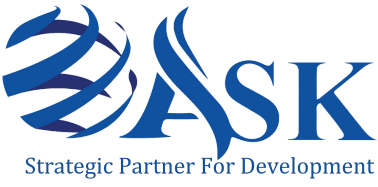

Rapid Market Appraisal (RMA) and Market Systems Analyses (MSA) of the Afghanistan Decent Work Country Programme (A-DWCP)
Afghanistan ended past few years with significant economic and development challenges. According to UNDP report, the estimates suggest an economic contraction by around 20 percent of GDP within a year, a decline that may reach 30 percent in the following years. The country’s international partners assessed the extent of these challenges and pledged more than US$13 billion in November 2020 over the following four years. This amount is an indicative of the scale of the challenges facing the country in the past few years.
Furthermore, the political change on 15 August 2021 has created new conditions. The drop in foreign aid that previously accounted for 40 percent of GDP has had an immediate and significant impact on the economy, which was already in decline. The country is also coping with one of the most severe droughts in decades, the impacts of the pandemic, and the rapidly increasing levels of food insecurity.
The absence of foreign aid has taken its toll on investment and therefore on current and future production, as well as on private consumption. The banking sector also is very much under stress, raising the risk of financial instability. As a result, Afghanistan has already entered a twin humanitarian and development crisis that is becoming graver and needs to be immediately addressed to save lives and protect livelihoods.
Reviving the Afghan economy during a time of declining external financial aid, and ongoing political uncertainty and dysfunction will be extremely challenging. However, efforts can be directed towards enriching domestic value chains and marketable skills in rural communities. Especial attention should be given to women and youth led business and skills supporting livelihood opportunities in rural areas of IDPS and returnees of Afghanistan.
According to a Business Establishment Survey (BES) in 2015, there are about 700,000 formal businesses in Afghanistan, which have a significant contribution to economic growth, accounts for 20 percent of Gross Domestic Product (GDP), and provides job opportunities for around 1.4 million people (20 percent of the total labor force). However, these businesses face many challenges on their way which include but are not limited to Political instability, corruption, access to finance, and informality are all important impediments for Afghan SMEs.
Small and medium-sized enterprises (SMEs) form the backbone 15 of Afghanistan’s private sector and play a critical role in the country’s economic growth, accounting for 20% of gross domestic products. SMEs also employs 20% of the workforce in the country.
Strong sectoral difference in skills and employment patterns are strongly reflected in the ‘quality’ of employment. Daily labor emerges unequivocally as the lowest quality form of employment irrespective of the sector or employment (farm versus non-farm) and area of residence (rural versus urban). Consistently lower monthly earnings are mirrored by a higher risk of poverty, especially in urban areas
Most of the SMEs (55%) have less than 10 employees including the owners, friends and family advisors and supporters. Not many SMEs are really looking into hiring more employees to do the jobs done. This generally reflects to the fact that people cannot manage employees specially the ones that they do not know. There’s a lack of a system to hire and deploy the employees that are not friends or relatives. In so many SMEs it has been witnessed that the employee has turned to be disloyal, robbed or leaked out company’s information and confidentiality. In some other cases the business owners believe that the employees after learning about their business well, start their own businesses and compete back with them.
The distribution of employment type and the degree of informality is strongly correlated with the characteristics of employment sectors. The Afghan labor market is characterized by a young and fast-growing workforce. The share of population aged 15 or below is as high as 51.3 percent, meaning that more than one in every two Afghans is economically dependent[i]. The Afghan labor market is characterized by a strong urban-rural divide. According to NRVA data and considering the national labor market as a whole, 66.5 percent of individuals in the working age population (aged 16 and above) participate in the labor market, 62.5 percent of individuals in the working age population are engaged in some form of employment during the month preceding the date of interview, whereas 7.85 percent of the labor force can be broadly considered as unemployed.
Client
ILO
Date
Nov 2022 - Feb 2023
Service
Monitoring and Evaluation
Specific objectives of the evaluation
The goal of this consultancy is to support the execution of a Rapid Market Appraisal (RMA) and Market Systems Analysis (MSA) of specific value chains in the targeted regions to identify and comprehend the underlying barriers to inclusive growth and job creation, with a focus on returnees, IDPs and their host communities, and women in the PARRs.
The consulting firm will employ data collecting enumerators and supervisors to help with the collection of data and information from specified stakeholders and respondents from each of the 55 PARR.
With a focus on women, the study will assist in identifying industries and subsectors that have the potential to produce respectable employment possibilities for returnees, IDPs, and their host communities. The ILO team will collaborate with all stakeholders to develop interventions based on this assessment, bringing the private sector into the host communities, and creating chances for paid employment and self-employment.
Photos From This Project
Previous
Next
Let's discuss your project !
Contact us today to have a talk about how we can be your strategic partner for development.
